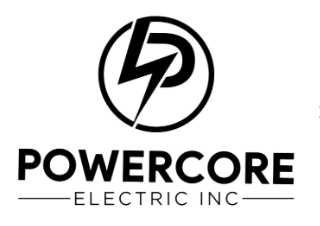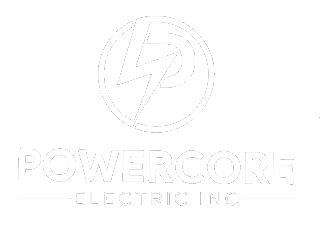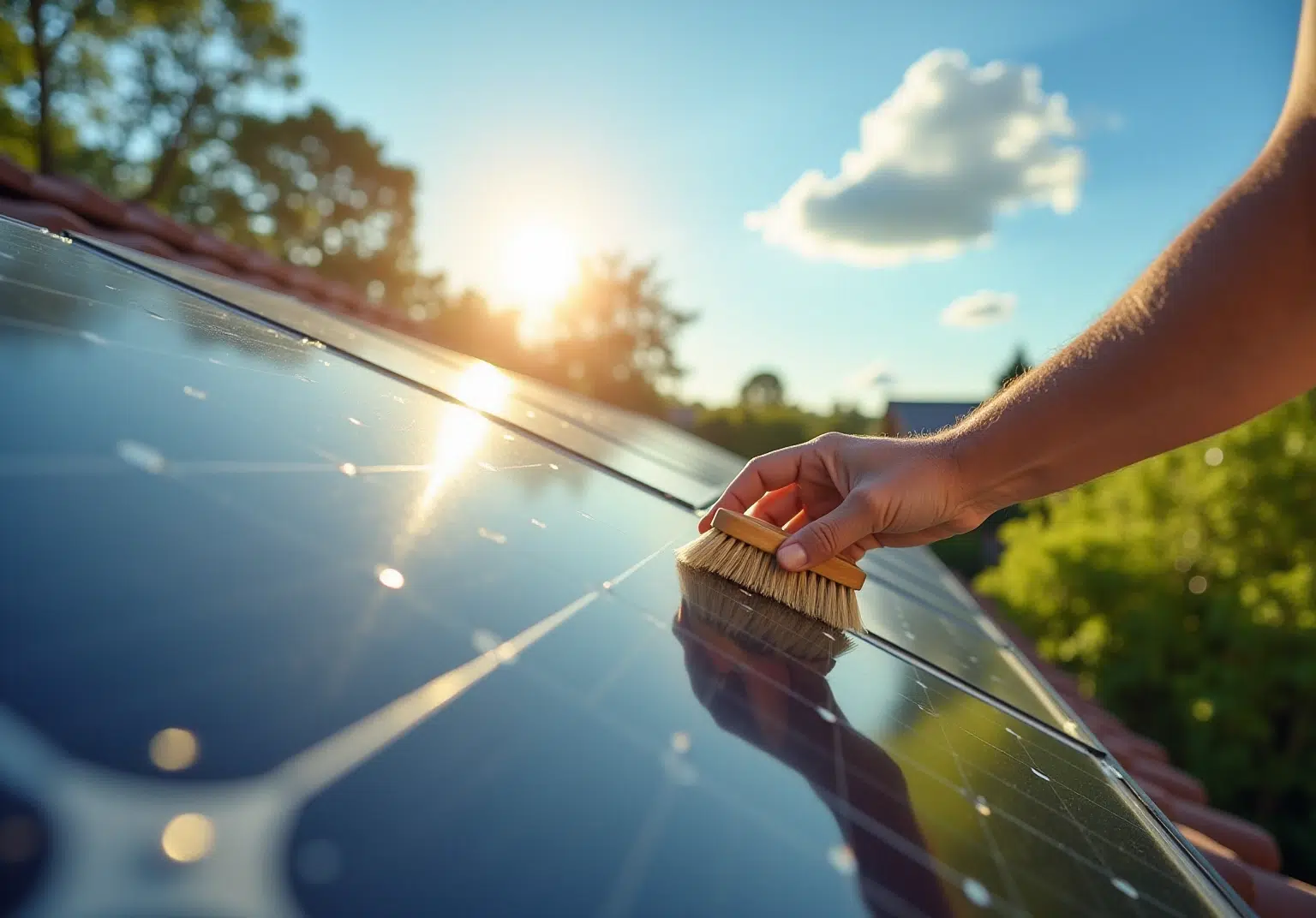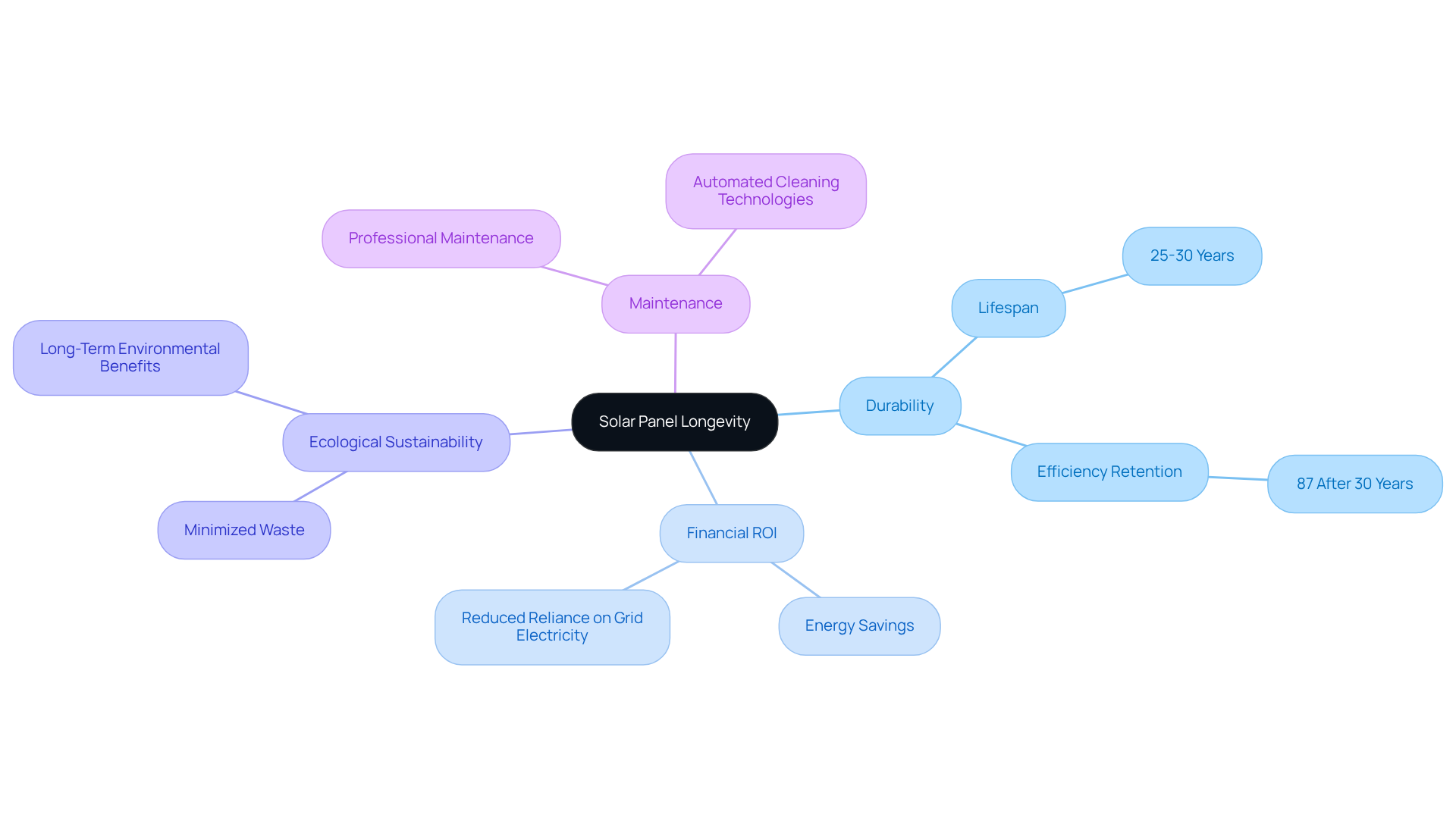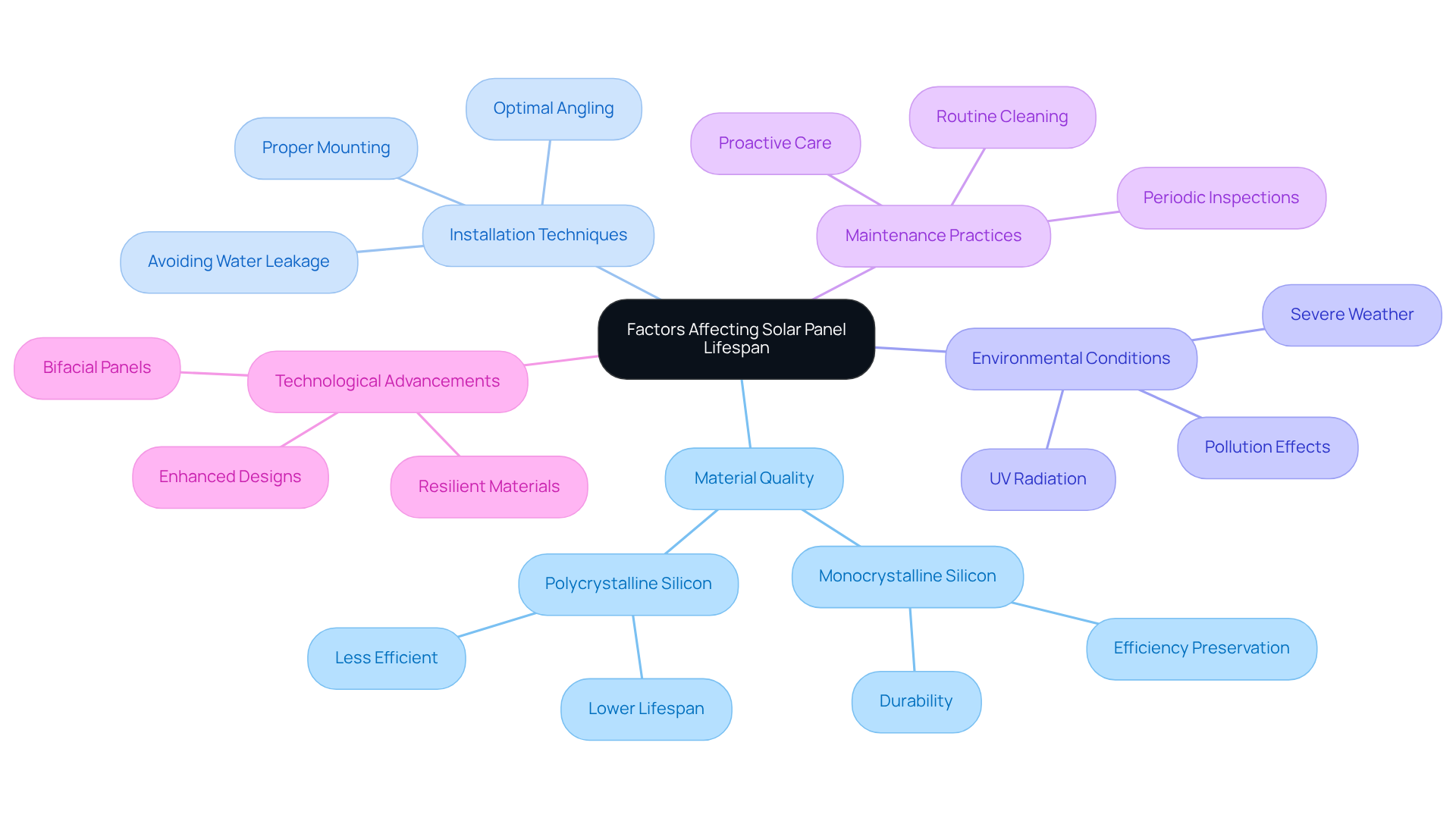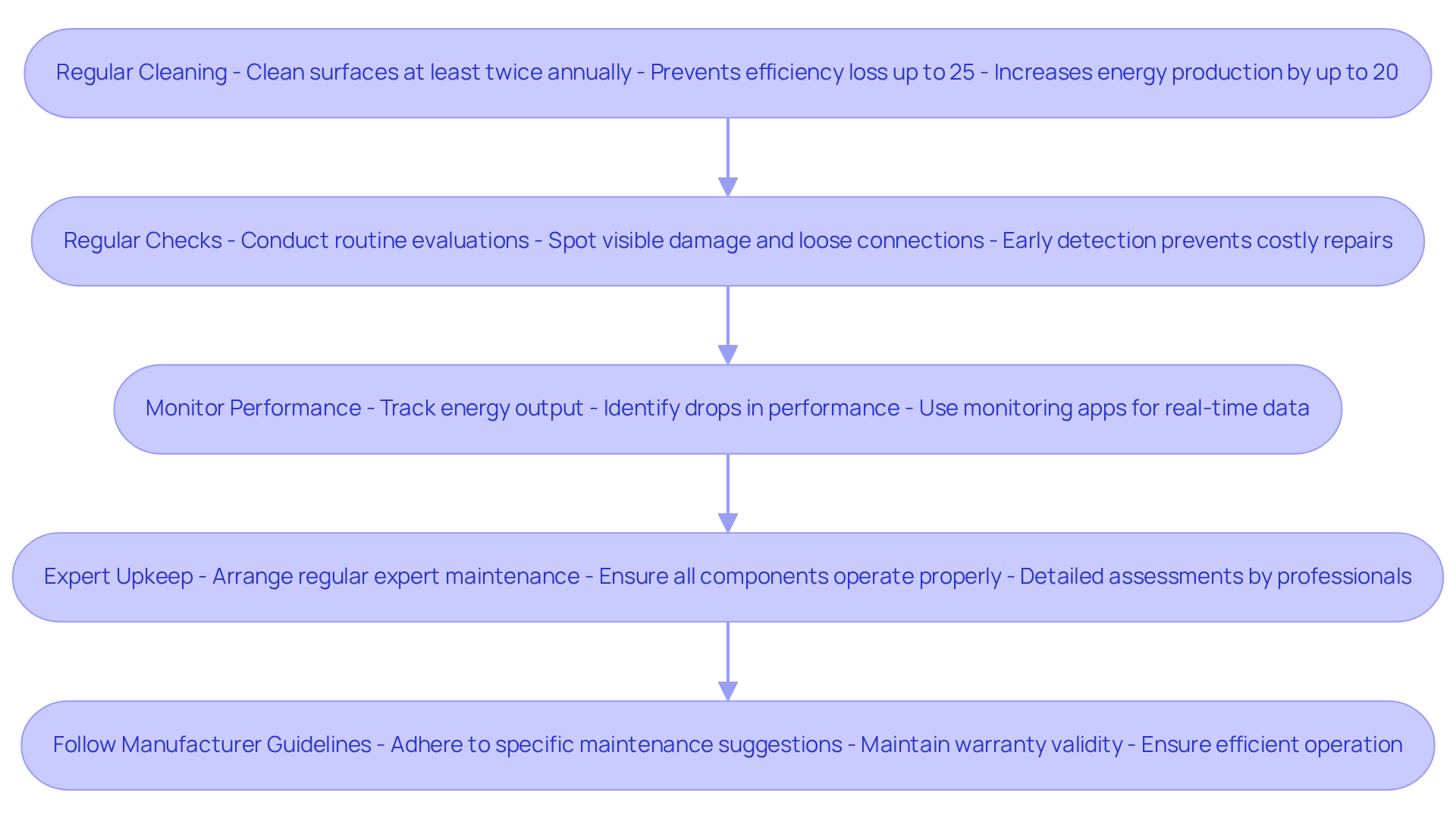Overview
We understand that rising energy bills can be a significant concern for many homeowners. The longevity of solar panels, which typically last between 25 to 30 years, with some premium models exceeding this timeframe, is an important factor to consider.
By focusing on the quality of materials, installation techniques, environmental conditions, maintenance practices, and technological advancements, we can help you navigate the complexities of photovoltaic systems. These elements significantly affect both the lifespan and efficiency of your solar investment, ultimately impacting your return on investment and energy independence.
Together, we can explore how adopting solar energy not only addresses your immediate concerns but also leads to a more sustainable and independent future. Let’s work towards finding the right solutions for your energy needs.
Introduction
As a homeowner considering the switch to renewable energy, you may be understandably concerned about the longevity of solar panels. This crucial factor not only influences your financial savings but also your overall environmental impact.
With systems designed to endure between 25 to 30 years, grasping the elements that contribute to this lifespan can empower you to make informed choices that promote energy independence and optimize your return on investment.
It’s common to wonder, however, what role environmental conditions, installation quality, and maintenance practices play in this equation.
Together, let’s explore the key elements that determine solar panel longevity, offering insights into how you can maximize the benefits of your lifetime solar investment.
Your journey towards sustainable energy solutions is important, and we’re here to support you every step of the way.
Define Solar Panel Longevity and Its Importance
We understand that managing energy bills can be a significant concern for homeowners. The durability of photovoltaic systems, which refers to their effective lifespan for generating electricity before performance declines, plays a crucial role in addressing these worries. Typically, are designed to last between 25 to 30 years, with premium models often exceeding this timeframe. This remarkable durability is not just a technical specification; it directly impacts your return on investment (ROI) and the long-term benefits associated with lifetime solar energy sources.
Imagine the peace of mind that comes with an increased lifespan, leading to prolonged phases of energy conservation and a reduced reliance on grid electricity. This makes photovoltaic systems a financially wise choice for those who care about the environment. Moreover, the resilience of these systems enhances their ecological sustainability, minimizing the need for replacements and reducing waste. For instance, many monocrystalline panels, celebrated for their efficiency, can retain around 87% of their initial power output even after 30 years. This highlights the long-term advantages of investing in lifetime solar energy technology.
It’s also essential to consider the role of professional maintenance in maximizing these benefits. Technologies like automated cleaning robots and self-cleaning coatings can significantly enhance the efficiency of your energy systems. By preventing issues such as corrosion and buildup, you can ensure that your shift to renewable energy not only maximizes economic advantages but also supports ecological well-being.
Together, we can explore how investing in photovoltaic systems can lead to a brighter, more sustainable future for your home. Let’s work towards energy independence and a greener planet, ensuring that your home remains a sanctuary of comfort and care.
Explore Key Factors Affecting Solar Panel Lifespan
As homeowners, we often find ourselves concerned about rising energy bills and the sustainability of our choices. Understanding the factors that influence the can empower you to make informed decisions that lead to energy independence and financial savings.
- Material Quality: The longevity of solar structures is significantly affected by the substances utilized in their fabrication. High-quality modules, especially those crafted from monocrystalline silicon, are recognized for their durability and efficiency preservation, contributing to lifetime solar performance when compared to lower-quality options. This distinction is crucial, as structures made with lifetime solar materials can last up to 40 years, significantly outpacing their less durable equivalents.
- Installation Techniques: We understand that proper installation is vital for maximizing the longevity of solar panels. Incorrect installation can lead to issues such as water leakage and structural damage, which can severely shorten the lifespan of the system. Techniques that ensure optimal angling and secure mounting are essential for enhancing energy absorption and preventing early degradation.
- Environmental Conditions: It’s common to feel concerned about how environmental factors might impact your solar investment. Solar modules encounter numerous challenges, such as severe weather, UV radiation, and pollution. Those installed in harsher climates may experience accelerated wear and tear, impacting their overall lifespan. Comprehending the local climate and choosing systems engineered to endure specific conditions can reduce these effects.
- Maintenance Practices: Routine upkeep, involving cleaning and examinations, significantly contributes to prolonging the lifespan of photovoltaic systems. Neglecting these practices can lead to decreased efficiency and potential damage, underscoring the importance of proactive care to preserve functionality.
- Technological Advancements: Ongoing innovations in solar energy technology, such as the creation of more resilient materials and enhanced designs, boost the effectiveness and lifespan of energy collectors. These advancements can potentially prolong the lifespan beyond the conventional 25-30 years, making contemporary systems a worthwhile investment.
By understanding these factors together, we can take proactive steps to ensure your system operates efficiently as a lifetime solar solution for as long as possible. Let’s work towards making your energy investment a source of pride and sustainability.
Understand the Role of Maintenance in Solar Panel Longevity
Proper upkeep is essential for maximizing the longevity and efficiency of photovoltaic systems. We understand that managing energy costs can be a concern, and is a meaningful step towards energy independence. Here are essential practices to consider that can help you feel more secure in your investment:
- Regular Cleaning: Buildup of dust, debris, and bird droppings can significantly decrease the efficiency of energy collection systems. Did you know that unclean surfaces can lose as much as 25% of their efficiency? In contrast, clean solar units can generate up to 20% more power than those that are overlooked. It is advised to clean surfaces at least twice annually, with more frequent cleaning in dusty or polluted regions, where upkeep may be required every 2-4 months. This regular cleaning not only enhances output generation but also prolongs the lifespan of the modules by preventing overheating and harm from collected debris.
- Regular Checks: It’s common to feel uncertain about the condition of your energy panels. Homeowners ought to conduct routine evaluations to spot visible damage, loose connections, or indications of deterioration. Early detection of issues can prevent costly repairs and ensure optimal performance, giving you peace of mind.
- Monitor Performance: Tracking the energy output of solar panels is vital for identifying drops in performance that may signal maintenance needs. Many contemporary setups are fitted with monitoring applications that deliver real-time information, enabling homeowners to react swiftly to any problems. Data suggests that the median loss rate for photovoltaic installation performance is 0.75% annually, with 90% of installations experiencing less than a 2% loss each year. Keeping an eye on performance can help you feel empowered in managing your energy needs.
- Expert Upkeep: We believe that arranging regular expert upkeep guarantees that all elements of the energy setup, including inverters and wiring, are operating properly. Experts offer knowledge that can pinpoint problems homeowners may miss, performing detailed assessments and tackling any necessary repairs, which improves the reliability of your setup.
- Follow Manufacturer Guidelines: Each renewable energy installation includes particular maintenance suggestions from the manufacturer. Adhering to these guidelines is essential for maintaining warranty validity and ensuring efficient operation.
By adopting these upkeep methods, you can greatly improve the lifetime solar efficiency and effectiveness of your solar panels, ensuring they keep supplying clean power for many years to come. Additionally, automated cleaning solutions like the IFBOT X3 can simplify the maintenance process, making it easier for you to keep your systems high-performing. Together, let’s strive to maintain clean energy surfaces that not only enhance performance but also contribute to a more sustainable and environmentally friendly residence.
Conclusion
We understand that rising energy costs can be a significant concern for homeowners. Investing in lifetime solar systems not only addresses these challenges but also paves the way for a sustainable future. By recognizing the longevity of solar panels and the factors influencing their lifespan, you can make informed decisions that enhance both your financial savings and your positive impact on the environment. With durability typically ranging from 25 to 30 years, it becomes crucial to select high-quality materials and ensure proper installation and maintenance.
Key considerations throughout this journey include:
- The quality of materials
- Installation techniques
- Environmental conditions
- Routine maintenance practices
By prioritizing these aspects, you can optimize your solar investment, ensuring that your systems operate efficiently for decades to come. Moreover, as technology advances, the durability and effectiveness of solar panels continue to improve, making them an even more appealing option for achieving energy independence.
Ultimately, embracing lifetime solar solutions is not solely about immediate financial benefits; it reflects a deep commitment to sustainability and environmental responsibility. By actively engaging in proper maintenance and staying informed about technological advancements, you can maximize the performance of your solar systems, contributing to a cleaner, greener planet. Together, let’s take these steps today, ensuring that your investment in solar energy pays off significantly in both economic and ecological terms for years to come.
